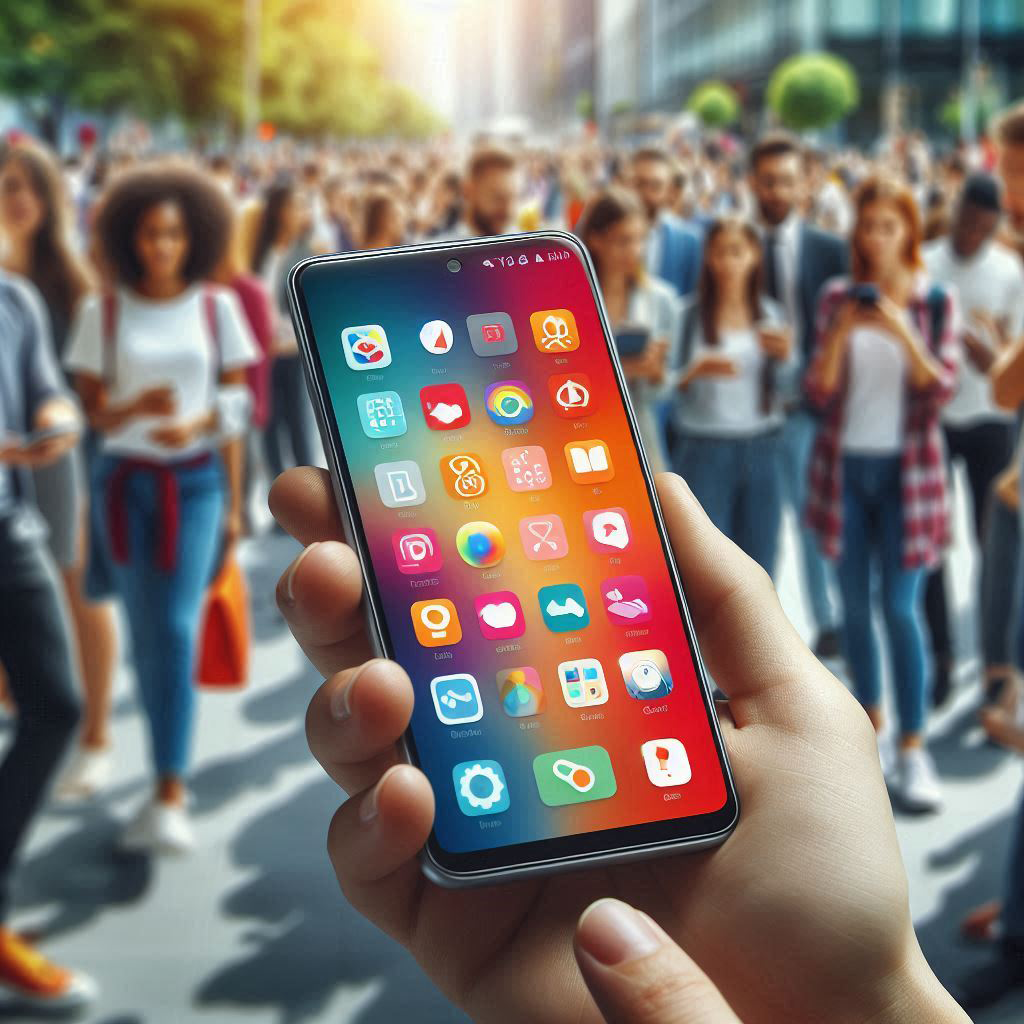Imagine a world where you can adopt a virtual pet that prances around your living room, chase dragons down the street, or even paint your walls with a flick of your smartphone. Welcome to Augmented Reality (AR) – where the lines between the digital and physical worlds blur and hilarity ensues. Let's dive into the whimsical world of AR and discover how it's making our everyday lives a lot more interesting.
What is Augmented Reality?
Augmented Reality (AR) is a technology that overlays digital information – such as images, sounds, or data – onto the real world, enhancing our perception of reality. Unlike Virtual Reality (VR), which creates a completely immersive digital environment, AR adds digital elements to the existing physical world, creating a unique blend of both. In short, AR is like a digital magician, making the ordinary extraordinary. Imagine looking at your coffee table and seeing a tiny dinosaur roaming around it or using your smartphone camera to visualize how a new piece of furniture would look in your living room.
The History of AR
AR may sound like a product of the 21st century, but its roots go back several decades. The term "Augmented Reality" was coined in the early 1990s by researcher Tom Caudell. However, the concept began to take shape much earlier, with Morton Heilig's "Sensorama" in the 1960s – an immersive theater experience that combined 3D visuals with sound, vibration, and smell. In the 1970s, Myron Krueger developed "Videoplace," an interactive environment that allowed users to interact with virtual objects. Fast forward to the 21st century, and AR has evolved from research labs to our smartphones, thanks to advances in computing power and mobile technology. The release of ARKit by Apple and ARCore by Google in the late 2010s made it easier for developers to create AR applications, bringing the technology to millions of users worldwide.
How AR is Being Used in Today's Society
AR is not just a sci-fi dream; it's already making a splash in various fields:
- Gaming: AR games like Pokémon GO have taken the world by storm, blending digital creatures with real-world locations and turning our neighborhoods into playgrounds. Players can catch Pokémon in their local parks, battle virtual monsters, and explore their surroundings in new and exciting ways.
- Education: AR is revolutionizing education by providing interactive and engaging learning experiences. Imagine studying astronomy by seeing the stars and planets come to life in your classroom or learning about anatomy by exploring a 3D model of the human body. AR can make abstract concepts more tangible and memorable.
- Retail: AR is enhancing shopping experiences by allowing customers to virtually try on clothes, visualize furniture in their homes, or see how a new haircut might look before making the cut. For example, IKEA's AR app lets users place virtual furniture in their living spaces to see how it fits and looks before making a purchase.
- Healthcare: AR is assisting medical professionals in surgeries by overlaying digital information onto a patient's body, providing real-time guidance and improving accuracy. Surgeons can use AR to visualize critical structures beneath the skin, enhancing precision and reducing the risk of errors. AR is also used for medical training, allowing students to practice procedures in a safe and controlled environment.
- Navigation: AR navigation apps overlay directions onto the real world, making it easier to find your way around unfamiliar places without constantly staring at your phone. These apps can provide turn-by-turn directions, highlight points of interest, and even guide you to specific locations within a building.
The Future of AR
The future of AR is bursting with potential. Here are some exciting possibilities:
- Enhanced Wearables: Expect more advanced AR glasses and contact lenses that seamlessly integrate digital information into our daily lives. Imagine having real-time translations, facial recognition, or contextual information about your surroundings right in front of your eyes. These wearables will be lightweight, comfortable, and stylish, making AR an integral part of our everyday lives.
- Social Interaction: AR will enable richer social interactions by allowing people to share AR experiences, play games, and collaborate on projects in real-time, regardless of their physical location. Virtual meetups, shared AR games, and collaborative AR art projects will bring people closer together, even when they're miles apart.
- Smart Cities: AR will play a key role in developing smart cities, providing real-time information about traffic, weather, public transport, and events to enhance urban living. Imagine walking down the street and seeing AR overlays with information about nearby restaurants, upcoming events, or public transportation schedules. AR can also help with urban planning, allowing city planners to visualize proposed changes and their impact on the environment.
- Training and Simulations: AR will revolutionize training in various industries by providing immersive and interactive simulations, from flight training to emergency response drills. Trainees can practice real-world scenarios in a controlled environment, gaining valuable experience without the risk. For example, firefighters can use AR to simulate firefighting scenarios, allowing them to practice techniques and strategies in a safe and realistic setting.
- Art and Entertainment: Artists and performers will use AR to create innovative and interactive experiences, blurring the lines between digital and physical art forms. AR can transform public spaces into interactive art installations, enhance live performances with digital effects, and create immersive storytelling experiences that engage and captivate audiences.
Can AR Be Trusted?
While AR is undoubtedly exciting, it comes with its own set of considerations. Users should be mindful of privacy concerns, as AR applications often require access to cameras and location data. Additionally, AR can sometimes create distractions or cause motion sickness for some users. It's important to use AR responsibly, stay aware of your surroundings, and choose reputable apps that prioritize user privacy and security. As AR technology becomes more widespread, developers and regulators will need to address these concerns to ensure user safety and trust.
Popular AR Platforms
Several AR platforms are leading the charge in making augmented reality accessible and enjoyable:
- Apple ARKit: Apple's ARKit provides tools for developers to create AR experiences on iOS devices, making it easy for users to access AR apps through the App Store. ARKit leverages the powerful hardware of Apple devices, offering features like motion tracking, environmental understanding, and light estimation to create realistic AR experiences.
- Google ARCore: ARCore is Google's platform for building AR applications on Android devices, bringing AR experiences to millions of smartphones and tablets. ARCore supports features like motion tracking, environmental understanding, and light estimation, enabling developers to create immersive and interactive AR apps.
- Microsoft HoloLens: The HoloLens is a mixed reality headset that blends AR and VR, providing an immersive experience for various applications, from gaming to industrial design. HoloLens features advanced sensors, spatial mapping, and gesture recognition, allowing users to interact with digital content in the physical world.
- Snapchat Lens Studio: Snapchat's Lens Studio allows creators to develop AR lenses and filters that users can enjoy within the Snapchat app, making everyday snaps more entertaining. Users can create custom AR effects, animations, and interactive experiences, sharing them with friends and followers on the platform.
- Magic Leap: Magic Leap offers AR headsets designed for both consumers and enterprises, focusing on creating immersive and interactive AR experiences. Magic Leap's technology combines advanced optics, sensors, and computing power to deliver high-quality AR content, making it a popular choice for developers and businesses.
Who Benefits from Using AR the Most?
AR benefits a wide range of individuals and industries:
- Gamers: AR games provide unique and immersive experiences that blend the digital and physical worlds. Players can explore their surroundings, interact with virtual characters, and embark on adventures that transcend traditional gaming.
- Students and Educators: AR enhances learning by making educational content interactive and engaging. Students can visualize complex concepts, explore historical sites, and conduct virtual experiments, making learning more enjoyable and effective.
- Shoppers: AR helps consumers make informed purchasing decisions by visualizing products in their real-world environment. Shoppers can try on clothes, see how furniture fits in their homes, and preview home improvement projects, reducing the risk of buyer's remorse.
- Healthcare Professionals: AR assists medical professionals in surgeries and training, improving accuracy and efficiency. Surgeons can visualize critical structures during procedures, medical students can practice techniques in a virtual environment, and patients can benefit from AR-assisted therapies and rehabilitation.
- Tourists and Navigators: AR navigation and tourism apps provide real-time information and interactive experiences, making exploration more enjoyable. Tourists can learn about historical landmarks, find their way around unfamiliar cities, and discover hidden gems with the help of AR.
Augmented Reality is not just a technological novelty; it's a transformative tool that's reshaping how we interact with the world. From virtual pets to real-life shenanigans, AR is bringing magic into our everyday lives. So, grab your smartphone or AR glasses and dive into the adventure – because with AR, reality just got a whole lot more exciting!













